
2022 Preservation Celebration Update!
We jumped for joy at our 2022 Preservation Celebration on September 21 where we celebrated our 2022 Preservation Award Winners and ongoing preservation work.


We jumped for joy at our 2022 Preservation Celebration on September 21 where we celebrated our 2022 Preservation Award Winners and ongoing preservation work.

On June 10, Historic Seattle became managing partner of the Good Arts Building in Pioneer Square, ensuring the long-term preservation of the building and continuing its mission as a hub for arts, culture, and creative enterprises in perpetuity.

Throughout the summer, we will engage the Beacon Hill community in a series of events to envision the future use of the property.

Historic preservation benefits everyone, but it has not traditionally served or recognized all communities. We are committed to addressing a lack of representation and inequities in the field.
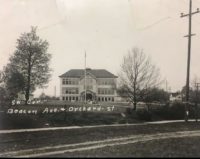
By Bassetti Architects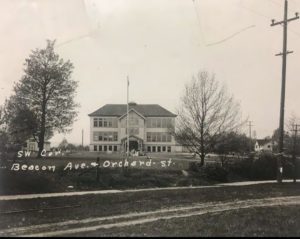
Located at the heart of the Beacon Hill neighborhood and designed by Seattle renowned architect Edgar Blaire, the Original Van Asselt School building was constructed in 1909 as one of the first elementary grade schools in south Seattle. Four classrooms organized around a central stair comprised the original two-story, wood-framed structure. The Original Van Asselt building has been described as a “free interpretation of the Tudor Style”, with a heavy timber porch and decorative half-timbering at the central gabled bay.
 Subsequent major additions included the 1940s basement classroom additions and a 2002 elevator addition. Both additions were built to the west – what is viewed today as the back side of the building. In 1950, a sprawling, one-story mid-century modern high school with a flat roof and brick veneer siding was constructed adjacent to the original 1909 school, largely obstructing its view from Beacon Avenue S.
Subsequent major additions included the 1940s basement classroom additions and a 2002 elevator addition. Both additions were built to the west – what is viewed today as the back side of the building. In 1950, a sprawling, one-story mid-century modern high school with a flat roof and brick veneer siding was constructed adjacent to the original 1909 school, largely obstructing its view from Beacon Avenue S.
In 2019, 110 years after the school saw its first cohort of students, Seattle Public Schools hired Bassetti Architects to renovate the 1909 school building as part of a master plan to add capacity to the campus. This site was identified by Seattle Public Schools to be used as a swing site for several schools during their own renovation or replacement construction period.
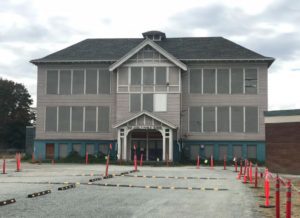 Vacant and boarded up since 2016, the building was in disarray, but the design team could see its potential. In May 2019, the building was designated a City of Seattle Landmark, and both the exterior and interior of the original 1909 construction were considered significant contributing elements.
Vacant and boarded up since 2016, the building was in disarray, but the design team could see its potential. In May 2019, the building was designated a City of Seattle Landmark, and both the exterior and interior of the original 1909 construction were considered significant contributing elements.
As part of the restoration, the classrooms will keep their original plaster walls and black slate chalkboards, while new mechanical, electrical, fire safety, and technology systems will be thoughtfully integrated to bring those spaces up to 21st century learning environment standards.
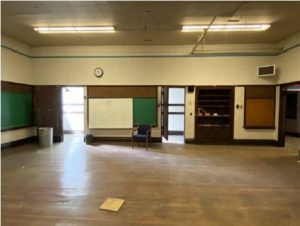 The main central stair will see its original plaster restored and the space will be brought up to code compliance on several fronts: the guardrail height will be increased while maintaining original elements, a new automatic sprinkler system will be installed, new light fixtures will be added, seismic upgrades will be completed, and fire separations will be provided. The building’s exterior wood and stucco siding will be repaired and painted, and its original wood window sashes and frames will be restored, reviving this community landmark’s historic character and integrity.
The main central stair will see its original plaster restored and the space will be brought up to code compliance on several fronts: the guardrail height will be increased while maintaining original elements, a new automatic sprinkler system will be installed, new light fixtures will be added, seismic upgrades will be completed, and fire separations will be provided. The building’s exterior wood and stucco siding will be repaired and painted, and its original wood window sashes and frames will be restored, reviving this community landmark’s historic character and integrity.
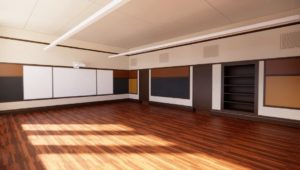 What is particularly unique about this project, is the successful revitalization of an abandoned centenary schoolhouse into a contemporary learning environment. Historic schoolhouses are often repurposed into apartments, museums, retails, or offices.
What is particularly unique about this project, is the successful revitalization of an abandoned centenary schoolhouse into a contemporary learning environment. Historic schoolhouses are often repurposed into apartments, museums, retails, or offices.
Because 21st century classrooms and other school resources require spaces and systems that are difficult to fit into smaller and older structures, the reuse of historic schoolhouses as modern teaching environments can be challenging. Thus, it’s no surprises that restoring the Van Asselt schoolhouse to its original purpose and protecting this part of Beacon Hill’s history while developing the site to best respond to the school district’s needs is an effort that was praised by the Seattle Landmarks Preservation Board, the School District staff, and the neighboring community alike. The schoolhouse’s new lease on life is an opportunity to make Original Van Asselt the shining jewel of the site once again and an integral part of the campus life.
To accommodate the swing site capacity need, Bassetti designed a new two-story classroom and gymnasium addition to provide space for an additional 650 students on campus. This new structure is designed with sustainable structural system of Cross Laminated Timber (CLT) and will adjoin the Original Van Asselt school in a way that maintains the prominence of the original schoolhouse entry and provides a backdrop against which the landmark structure is featured. A formal courtyard, designed to accentuate the symmetry of the 1909 façade, further elevates the architecture and the neighborhood presence of the landmarked building.
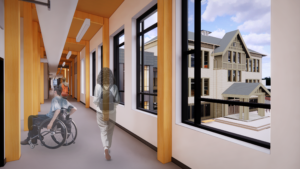 The color palette of the 1909 building was selected to accentuate the different architectural features while the exterior finishes of the new addition will complement the original schoolhouse, thus the buildings will read as a comprehensive composition within the larger campus. Bassetti focused on maintaining a level of simplicity in the design of the new addition. In doing so, the restored 1909 building is clearly established as the focal point of the site and remains the tallest and most ornate structure.
The color palette of the 1909 building was selected to accentuate the different architectural features while the exterior finishes of the new addition will complement the original schoolhouse, thus the buildings will read as a comprehensive composition within the larger campus. Bassetti focused on maintaining a level of simplicity in the design of the new addition. In doing so, the restored 1909 building is clearly established as the focal point of the site and remains the tallest and most ornate structure.
 A true testament to the Landmark review process, the Original Van Asselt project is a shining example of a historic schoolhouse rehabilitation that will be celebrated and enjoyed by many more future generations of students, teachers, and community members.
A true testament to the Landmark review process, the Original Van Asselt project is a shining example of a historic schoolhouse rehabilitation that will be celebrated and enjoyed by many more future generations of students, teachers, and community members.
Bassetti Architects is a generous sponsor of Historic Seattle’s 2022 Community Education & Advocacy Programming. This post is part of a series of guest blogs submitted by members of the Historic Seattle community. The views and opinions expressed in guest posts are those of the authors and do not necessarily reflect the positions of Historic Seattle.
Photos:
1: 1909; 2: 1950; 3: 2022; 4: original classroom; 5: classroom remodel rendering; 6: hallway perspective; 7: site perspective (all courtesy of Bassetti Architects)
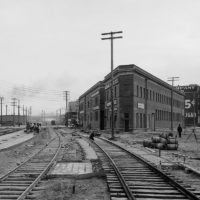
By the Gridiron team
This month Historic Seattle is embracing retrofits and HeartBombing unreinforced masonry buildings (URMs).
One URM that has already been retrofitted is Gridiron Condominiums located in Pioneer Square. The century-old Seattle Plumbing Building was a four-story unreinforced masonry warehouse.  It is the only triangular historic building in Pioneer Square and sits at the southern gateway of the historic district and the rising waterfront park.
It is the only triangular historic building in Pioneer Square and sits at the southern gateway of the historic district and the rising waterfront park.
Daniels Real Estate turned the four-story masonry building into condominium homes by adding seven levels of housing plus rooftop amenities, blending historic and contemporary architecture.
It took over a year to retrofit the masonry building before the glass-sheathed residences could be built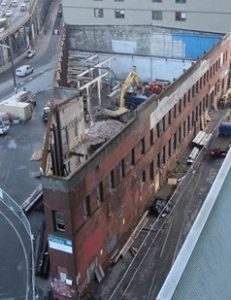 on top. The first-floor commercial space still retains the warm brick and rustic beams original to the building.
on top. The first-floor commercial space still retains the warm brick and rustic beams original to the building.
And this year, we are celebrating that the first floor will soon come back to life as office space and some type of food and beverage venue, giving us all an opportunity to enjoy this unique building.
Daniels purposefully reimagined the historic building as commercial with condominiums on top given its proximity to the Stadium District and the new waterfront.
Railroad Way, named after the railroad track that formerly ran in front of the warehouse, will be one of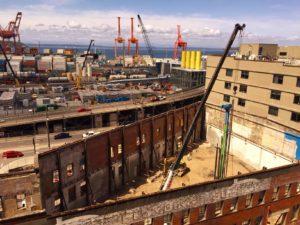 four pedestrian gateways that will reunite Pioneer Square to the waterfront promenade, perfect for the new retail.
four pedestrian gateways that will reunite Pioneer Square to the waterfront promenade, perfect for the new retail.
For homeowners, it’s a front row seat to over 20 acres of programmed open spaces, running and walking paths, vendors, entertainment, restaurants, and much more. In addition to living in Pioneer Square, a National Historic Register & local historic District, you’re just minutes from Light Rail with access to anywhere north, south, east, and west.
Established in 1903 and reinvented in 2018, Gridiron is a model for repurposing unreinforced masonry buildings to meet a community need, and we are very excited that the commercial spaces are soon going to be adding to the vibrancy of Pioneer Square, our city’s sweetheart neighborhood for historic masonry buildings.
Learn more about owning a piece of history.

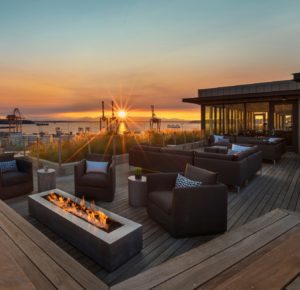
Gridiron is a generous sponsor of Historic Seattle’s 2022 Community Education & Advocacy Programming. This post is part of a series of guest blogs submitted by members of the Historic Seattle community. The views and opinions expressed in guest posts are those of the authors and do not necessarily reflect the positions of Historic Seattle.
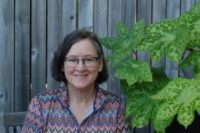
What plants live at the Good Shepherd Center? Where are they located? How can we recognize them?
Thanks to Janet Egger, these questions can be answered through the magic of technology. Janet generously gave her time to create an Access database for plants at the Good Shepherd Center to support Historic Seattle’s lead gardener Tara Macdonald.
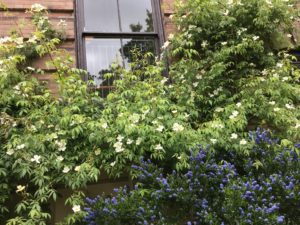 Tara says, “It has been a goal of mine for the past 8 years to create such a database, but I simply didn’t have the time. I also only know Excel which would not have been a sufficient system. This wasn’t as simple as just entering names but included identifying, mapping, and photographing plants requiring several trips to the garden.”
Tara says, “It has been a goal of mine for the past 8 years to create such a database, but I simply didn’t have the time. I also only know Excel which would not have been a sufficient system. This wasn’t as simple as just entering names but included identifying, mapping, and photographing plants requiring several trips to the garden.”
Janet has been in horticulture since 1971 and has been a plant breeder since 1980. She holds a B.S. in Botany and an M.S. in Horticulture from UC Davis. She recently retired as head plant breeder for Terra Nova Nurseries, Inc. in Canby, Oregon. Plants in the trade that Janet bred include cultivars of Heuchera, Heucherella, Sedum, Kniphofia, Agastache, Penstemon, Phygelius, and Podophyllum ‘Spotty Dotty’ among others. She has taught horticulture classes at UC Davis, Merritt College and Gavilan College. Janet currently is volunteering at Dunn Gardens in Seattle, as a board member, docent, 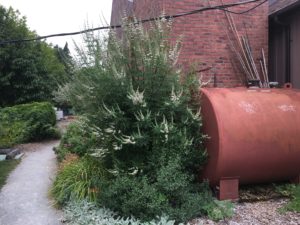 propagator, lecturer, and plant identifier. Since retiring to the Seattle area, she has been filling her time with projects like this and learning from plant identification experts about plants she is not yet familiar with.
propagator, lecturer, and plant identifier. Since retiring to the Seattle area, she has been filling her time with projects like this and learning from plant identification experts about plants she is not yet familiar with.
The inspiration for the Good Shepherd Center project came from Dunn Gardens, where Janet had created a database. The assistant gardener there suggested that she consider the GSC.
“Tara had lots of plant lists & knew the names of plants. She broke the map down into sections & then I located the plants and identified unlocated plants & put them each in their sections using codes. It was a lot of data input,” Janet said. In total, 800 plants were added to the GSC plant database, which can continue to evolve and be maintained. Each plant listing includes the botanic name, the common name, location on site, and flower color or physical description.
Janet added , “It was really fun. I got to learn new plants. The Good Shepherd Center has some really 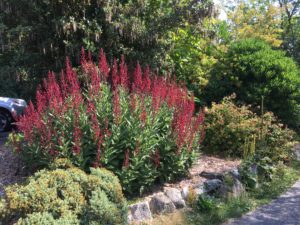 cool plants, because the former gardeners and current are plant people so they keep putting new things in…which is fun for a plant geek.”
cool plants, because the former gardeners and current are plant people so they keep putting new things in…which is fun for a plant geek.”
With this new database, any plant at GSC can be looked up using a photo of whole plant and close-up image of the stem, leaf arrangement, or flower.
Thanks, Janet, for your work to make plants Access-ible!
Photos from top to bottom, provided by Janet: Plants at the Good Shepherd Center, Rosa ‘La Montoya’, Vitex agnus-castus White form, and Lobelia tupa
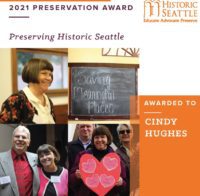
Looking back over my 40 years with Historic Seattle, I find myself focusing on various sets of memories, from the many executive directors with whom I have worked (five in total), to the volunteer governance that I have supported (some of whose tenure with the organization goes back almost as far as mine), to the many properties acquired and restored by our real estate arm.
Somehow, it is the many and varied places where I have worked that rise to the surface when I reflect. Most who know the organization cannot picture us as being anywhere else than the Dearborn House, but there was much that went before.
I first joined the staff of HS when their offices were located on the 12th floor of the Smith Tower in Pioneer Square, at a time when our IBM Selectric typewriters represented the most advanced office technology of the day. My most recent workplace was my upstairs home office on Queen Anne Hill, working remotely during a global pandemic. In between?
There were stints in several Pioneer Square properties, both owned and rented, in the historic Dearborn House on First Hill when it was donated to us in the late 90s, as well as the Good Shepherd Center in Wallingford. All of these locations represented the organization recovering, growing, responding to opportunities, pivoting, and making the most of the unique set of powers it holds as a public development authority.
Through all these years and locations, I have been motivated and inspired by the mission of the organization. I always felt that I was part of a group accomplishing the valuable work of preserving places in Seattle that are important to all our residents. I look forward to watching this crucial and timely work continue even as I move onto my next chapter.
-Cindy Hughes, Council Assistant & Good Shepherd Center Rental Coordinator
Photo: Historic Seattle presented Cindy with the 2021 Preserving Historic Seattle Award at its Preservation Celebration in October.
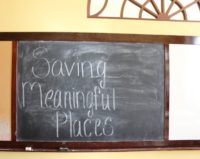
What better way to end this challenging year than by celebrating the people who we’ve seen doing great work in preservation throughout 2021?
We’ve worked with many incredible people throughout the past year, but here are the standouts our staff chose as their favorite People of Preservation in 2021.
Eugenia Woo (Director of Preservation Services)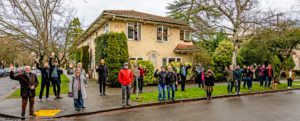
For over a year, I’ve been inspired by the residents and neighbors of the La Quinta Apartments, a Frederick Anhalt-developed, 1920s, courtyard apartment building in Capitol Hill. The long-time owner had passed away; community advocates sounded the alarm about the future of the property early enough so that Historic Seattle could help by sponsoring the landmark nomination prepared by Northwest Vernacular. This place is important not just for its architecture but also for the stories connected to the people associated with the La Quinta for many decades. The advocacy group, called ¡Viva La Quinta!, succeeded in its efforts! The Landmarks Preservation Board designated the La Quinta Apartments and placed controls on the property in 2021. Residents brought their skills to the table by creating a website, designing cool graphics used for effective messaging, tapping their networks to build support for landmarking, and sharing their passion to fight for saving this historic place. Their commitment to save the La Quinta was inspiring.
Jeff Murdock (Preservation Advocacy Manager) 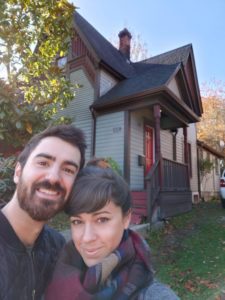
Not knowing exactly what they were getting into, in late 2019 Justin Lemma and his wife Victoria Pinheiro purchased one of the Victorian-era (1893) vernacular houses perched in a row along the east side of the 800 block of 23rd Avenue. Historic Seattle holds a preservation easement on four of the houses, and they are also designated Seattle Landmarks. As such, Historic Seattle and the City weigh in on proposed alterations to ensure the historic character of the buildings is maintained. Justin, an alum of the U.W. College of Built Environments and a Project Designer with Build LLC, was excited to get started on making repairs to the house and only slightly intimidated by the approval process. The ensuing pandemic provided Justin plenty of time at home to do the work. He made repairs to the rotting entry porch, cleaned up the overgrown yard, installed a new paver driveway and replaced the scraggly chain link with a trim cedar fence. They converted the tiny garage at the back of the property into a living space, complete with a bar and small loft, providing space for the couple to work from home in separate spaces. Justin even installed historic windows salvaged from another old house being torn down in the neighborhood. Recently, Justin convinced two more architects from his U.W. Architecture cohort to purchase the house next door, so there is now a community of preservationist architects on this block of 23rd Ave!
Simon Wright (Facilities & Maintenance Manager) 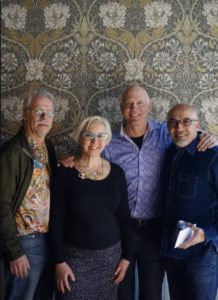
The collective ownership and operation of the Good Arts Building. I’d long admired Cherry Street Coffee’s immaculately painted and maintained façade. Meeting Steve, Jane, Ali, Greg, and Armondo showed me that work was not done just for curb appeal and that the collective ownership has been amazingly successful in collectively restoring, operating and maintaining a historic building for a contemporary use!
Taelore Rhoden (Community Events Manager) 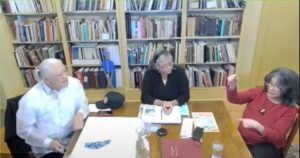
I give all of my flowers to Dorothy Cordova, Cynthia Mejia-Giudici, and Pio De Cano II. These three have been preserving Filipino American history for decades! It was an honor to partner with them and the Filipino American National Historical Society (FANHS) to share the legacy and impact of Seattle’s Filipino American community with hundreds of people (and counting!) this year. Their leadership, camaraderie, and genuine love of people is deeply inspiring and worthy of all of the gold stars.
Cindy Hughes (Council Assistant & GSC Rental Coordinator) 
Leanne Olson is not a newcomer to historic preservation, having received Historic Seattle’s Beth Chave Award for being a “Preservation Champion” in 2018, but she has continued to work tirelessly throughout the pandemic for the preservation of Queen Anne Hill’s historic legacy. The longtime Board member of the Queen Anne Historical Society and the chair of its Landmarks Preservation Committee, Leanne provides an example of a highly effective advocacy approach to preservation through her steady participation in meetings of the City of Seattle’s Landmarks Preservation Board. Additionally, she is my neighbor, and I enjoy running into her on the streets of Queen Anne and chatting about what’s happening on the Hill!
Jane Davies (Director of Finance & Administration)
Hats off to Beneficial State Bank, especially Cynthia Weaver and Stacey Krynsky. They are responsive and personable and truly make banking fun. Their creativity in solving our financial puzzles allows us to nimbly engage in preservation projects. Additionally, they understand our mission of saving meaningful places to foster lively communities by connecting our organization with other groups, creating a preservation-minded network in Seattle.
Danielle Quenell (Office Administrator) 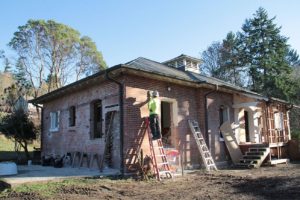
This spring, my partner and I bought a home in the historic Fort Ward district of Bainbridge Island. We quickly realized our new neighborhood was teeming with preservationists, including district commissioner Sarah Lee and the non-profit organization Friends of Fort Ward. Together, they managed to save the historic Fort Ward Parade Grounds in 2002 and have them dedicated as a public park, and most recently restored the 1910 bread bakery into a beautiful community hall.
Naomi West (Director of Philanthropy & Engagement) 
This year, I’ve been awestruck by Stephanie Johnson-Toliver! In 2021 alone, she joined Historic Seattle’s council; became a new HS donor; attended several virtual & in-person programs, our gala, and tours of properties; was a panelist for our Central District History Collective; moderated our conversation with Candacy Taylor; and began working with us to plan a partnership with Black Heritage Society of Washington State. Are you tired just reading that? Reflecting on this year, I recall her concern about her ability to commit enough time to being a part of our leadership. That’s because when she’s in, she’s all in. Her dedication, commitment, and generosity of spirit are remarkable. Thank you for all you are giving to the preservation community, Stephanie!
Kji Kelly (Executive Director)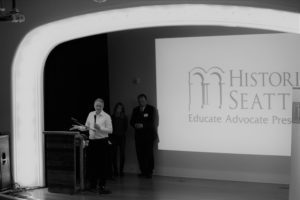
I have so many favorite individuals and organizations within the preservation community. One individual who has stood out to me, frankly for his entire career, but particularly over the past year is Kevin Daniels. The completion of The Lodge at St. Edward Park is an unbelievable achievement, a terrific example of creativity and sheer determination.
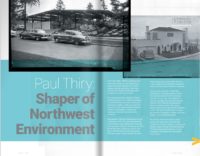
By Kristina Damschen Spina
Indow is a Portland-based manufacturer of interior storm window inserts. Our inserts are designed to preserve a building’s original windows by improving their performance in areas of noise, drafts, and energy consumption. We are passionate about historic preservation, so we created a zine to engage communities around the issue.
A zine (pronounced zeen) is a small DIY self-published work of original or appropriated texts and images, often produced via photocopier. The format of making zines—unencumbered by rules relating to form, function, or purpose—allows makers to share stories about anything. As preservationists work to expand the narrative on saving old places, make preservation inclusive, and reach new audiences, zines are one strategy you should add to your toolkit.
The Indow zine theme for 2021 is community sustainability and how we have managed to maintain a sense of community and place in isolation. When we announced this theme, we asked: “How do we celebrate a place when we cannot stand in it? How do we lift up a community when we cannot gather?” We are grateful for creative people like those at Historic Seattle, who answered our question by asking in return: “Who says you have to stand still in a place to celebrate it?” Historic Seattle’s bike tour of historic sites in the Emerald City, which they’ve been organizing for several years, is an ingenious way to safely gather people and honor the city’s old places.
This year’s Preservation Month Bike Tour offered three routes throughout the city highlighting the remaining Paul Thiry architecture. Thiry introduced Seattle to European Modernism, one of the subgenres of which is Brutalism, used widely in the communist countries of the Eastern Bloc. As a result, many Seattleites had difficulty warming to this new architectural aesthetic popping up in the city. Famously, a Thiry-designed home went on sale for $1 but was demolished after no one purchased it. While Thiry’s contributions may not be widely celebrated, they are part of Seattle’s architectural heritage, and we applaud Historic Seattle for teaching this part of the city’s history.
Did you attend Historic Seattle’s Preservation Month Bike Tour? Consider making your own zine to spread awareness about preservation in your community. Check out Historic Seattle’s submission to the 2021 Indow zine for inspiration. You can find this year’s Indow zine and all of our past editions on the Indow online zine library. Past zine themes include preservation and illuminating our cities with neon. Looking through our past zines will help to demystify the process of making your own. Watch out for our online zine submission page for an update on next year’s zine theme.
If you have a great idea for your zine, but aren’t quite sure how to get it off the ground, we got you covered. Take a look at the Indow Zine Resource Center to learn how to create your first zine. Be sure to watch the zine workshop for wonderful insight provided by the panel with members of the Indow marketing team and guests.
Indow is a generous sponsor of Historic Seattle’s 2021 Community Education & Advocacy Programming. This post is part of a series of guest blogs submitted by members of the Historic Seattle community. The views and opinions expressed in guest posts are those of the authors and do not necessarily reflect the positions of Historic Seattle.